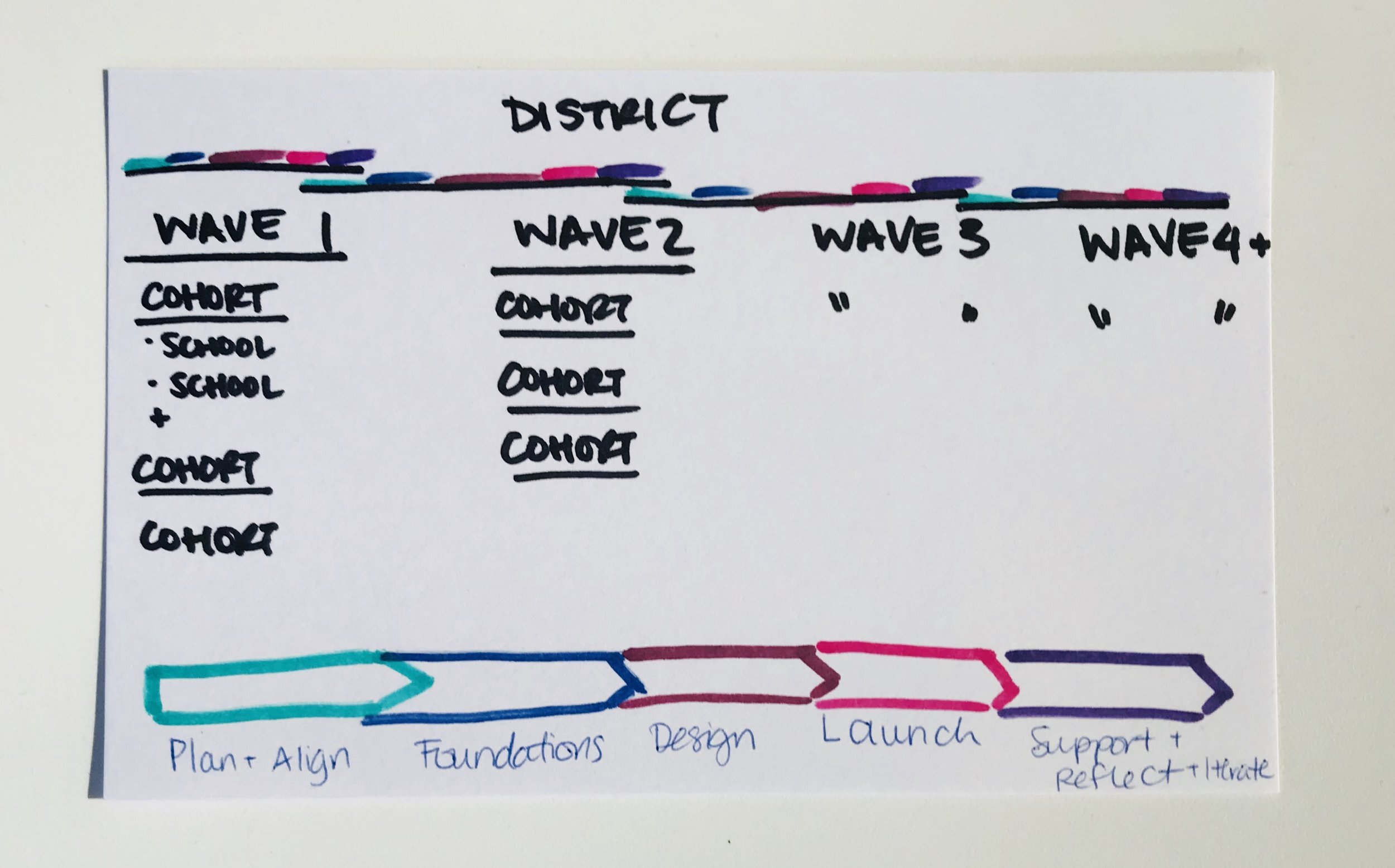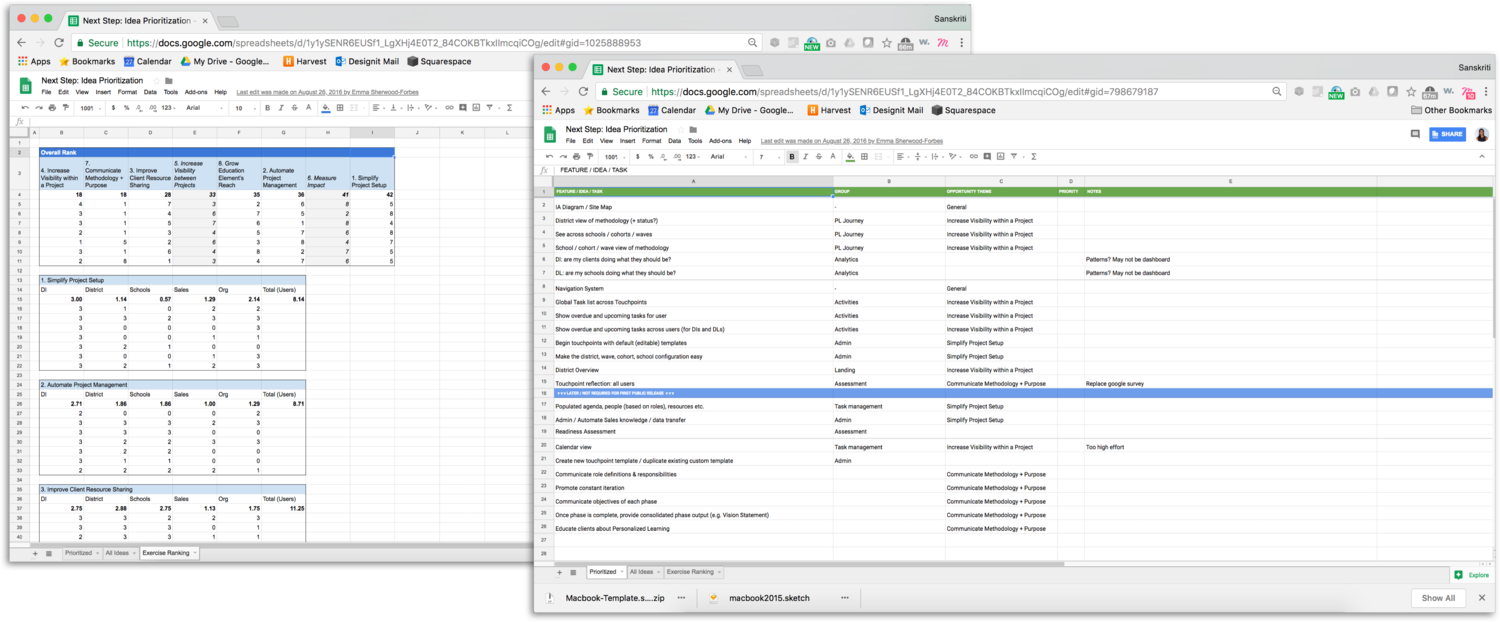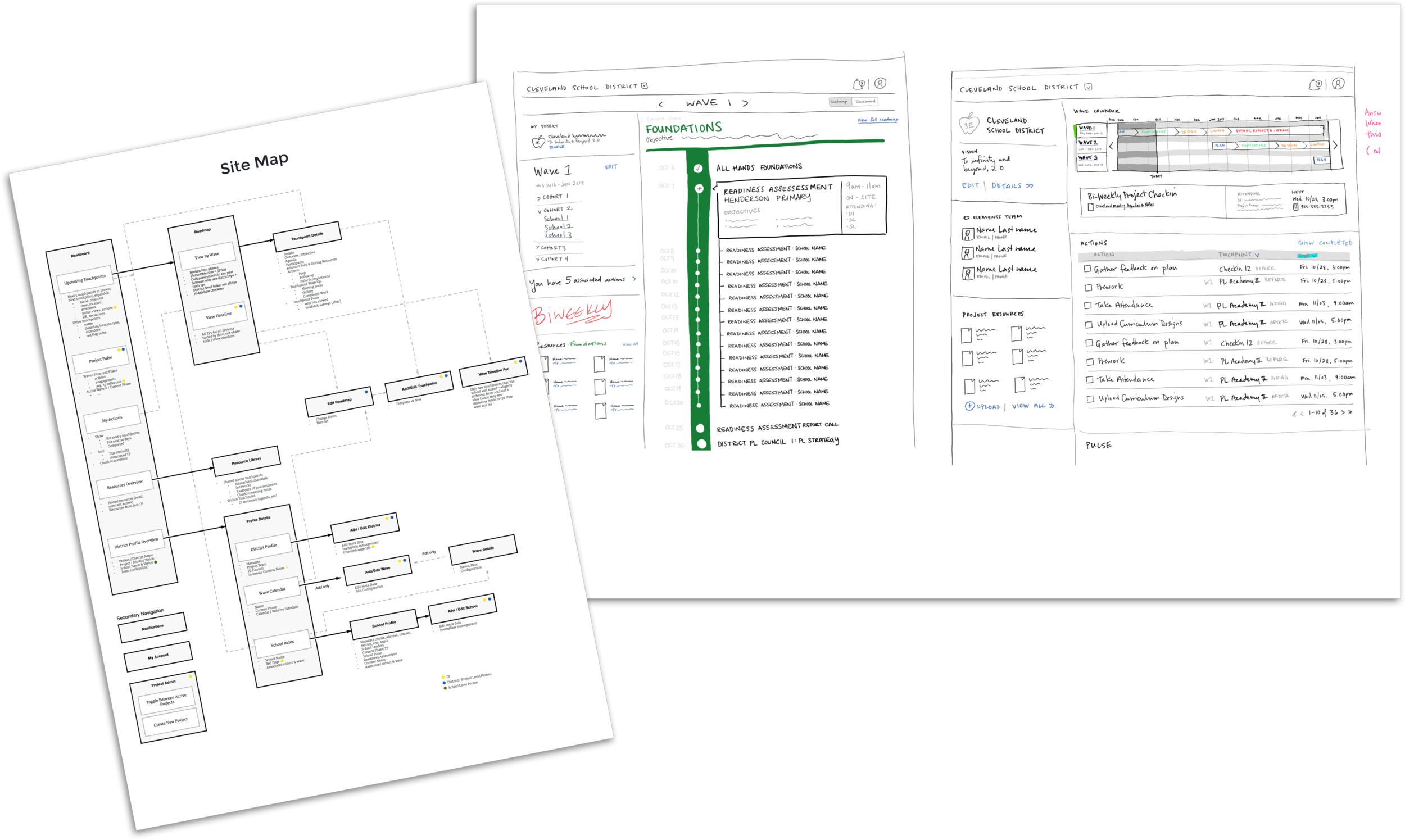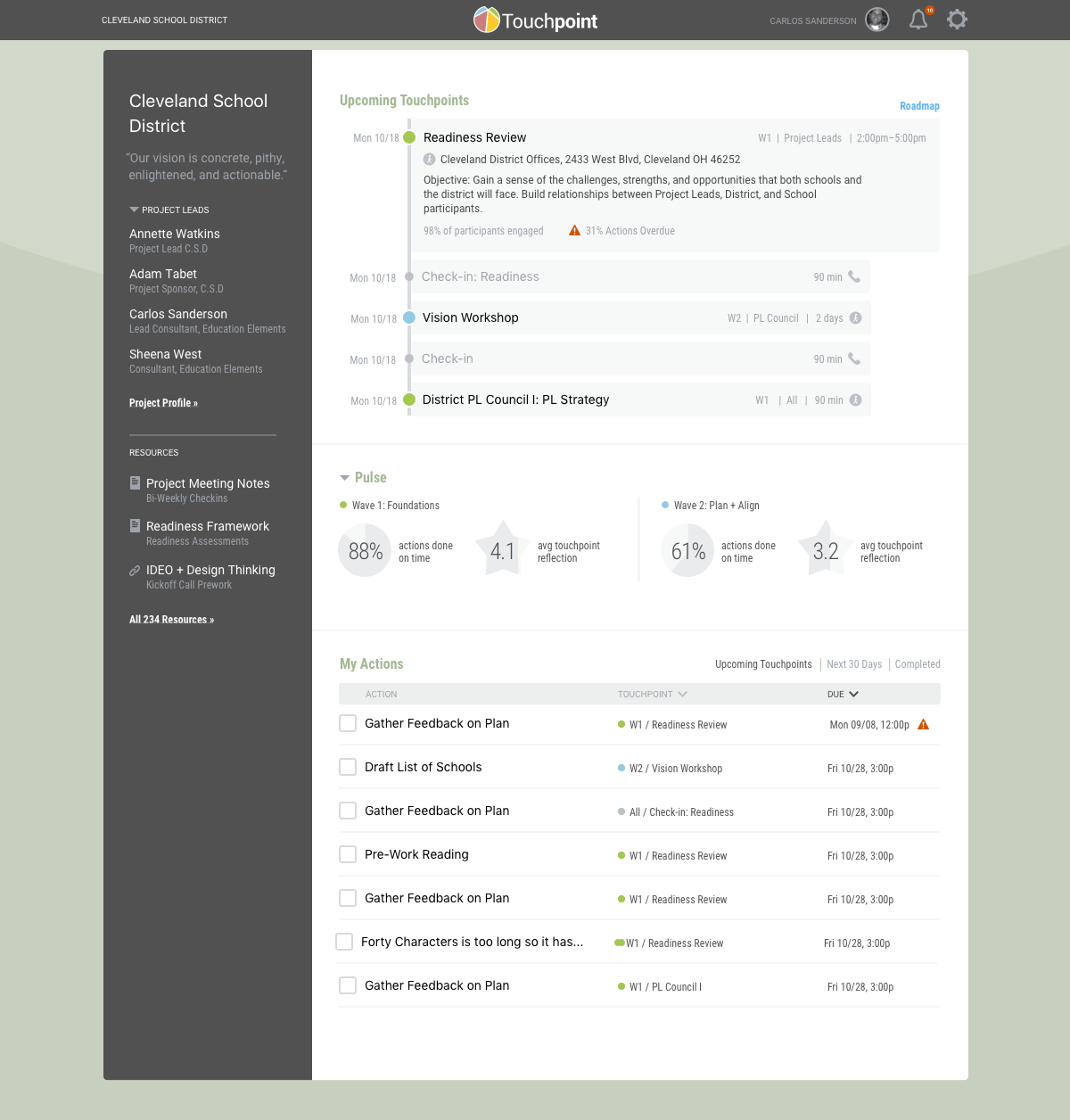Project Management Tool for Implementing Personalized Education
The Company
Education Elements is a consulting group that helps school districts to design and implement Personalized Education programs, a methodology that helps students learn in their own way.
The Problem Space
Education Elements's design & implementation service is so high-touch that it is limiting the organization's ability to expand its reach.
The Project
A 2-month project to articulate the customer journey more holistically, and identify a strategy and a roadmap toward a future in which customers have a clear and consistent relationship with the organization. Our project would:
Explore the customer space, to understand the role of real-time data and relationship with OSIsoft in customer’s maturation.
Lay the foundation for OSIsoft’s own organizational transformation and ensure its ability to act on the customer insights we delivered.
My Role
I was part of a 2-person team that did all of the research, strategy, and client management.
Our Process
Research Findings: Complexity in the Customer Space
From talking to 30+ Design & Implementation consultants, school leads, and district leads, we were able to synthesize three key pain points.



Pain Point 1
Project management tasks like checking for task completion prevents Design & Implementation consultants (DIs) from investing in valuable interactions like on-site visits and workshops.
Pain Point 3
For School & District leads, the project structure is complex and the big picture is hard to grasp.
Pain Point 2
Education Elements as an organization struggles to measure impact. This makes it hard for them to let their clients know how things are going.
Alignment Workshop
During our stakeholder research, we realized that the Education Elements team wasn't aligned on who their product should primarily serve. To move forward, we designed exercises to reach alignment and prioritize features for the product roadmap.
1. Understand
Present user opportunities from our research findings to stakeholders
2. Choose
Use Madlib Exercise for stakeholders to individually write down their product vision to then discuss with the group.
3. Score & Prioritize
On the Opportunity Cards, stakeholders gave each opportunity scores based on its importance to users. These were tallied and measured against target user to create a product roadmap.
Design: Site Map, Sketches & Wireframes
To begin the design phase, I worked on the site map in conjunction with low fidelity sketches of the platform. Sketching allowed me to make quick change, not get attached to any ideas I had, easily determine the landscape of the platform, and create a cohesive foundation for design.
We then took our sketches and created hi-fidelity designs to target our pain points.
Solution 1
We created one dashboard that drilled down into detailed views of waves, cohorts, and schools.
This helped simplify the complex structure of these implementation projects.
Solution 2
We prioritized the near future, giving a detailed view of the next touchpoint and a high-level summary of all other elements. We also gave a clear indication of where 'Today' was in the process.
This helped users understand exactly what they needed to do next, and DI consultants actually saw a 34% increase task completion.
Solution 3
We created the concept of Pulse, status indications that could be attached to any element.
These reflective status indications allowed Education Elements to measure its impact and demonstrate its value to its clients.
Key Takeaways
1. We built a tool set for Education Elements that was more than just a task list. The new platform helped schools understand each step of the process and how they related to creating a good Personalized Education system.
2. The research-oriented interactive activities I created helped get this splintered group of stakeholders to focus on a user target and prioritize a road map.
3. Organizing information and elements by importance and urgency allowed the users to focus on the task at hand. Implementing these design principles improved task completion by 34%.










